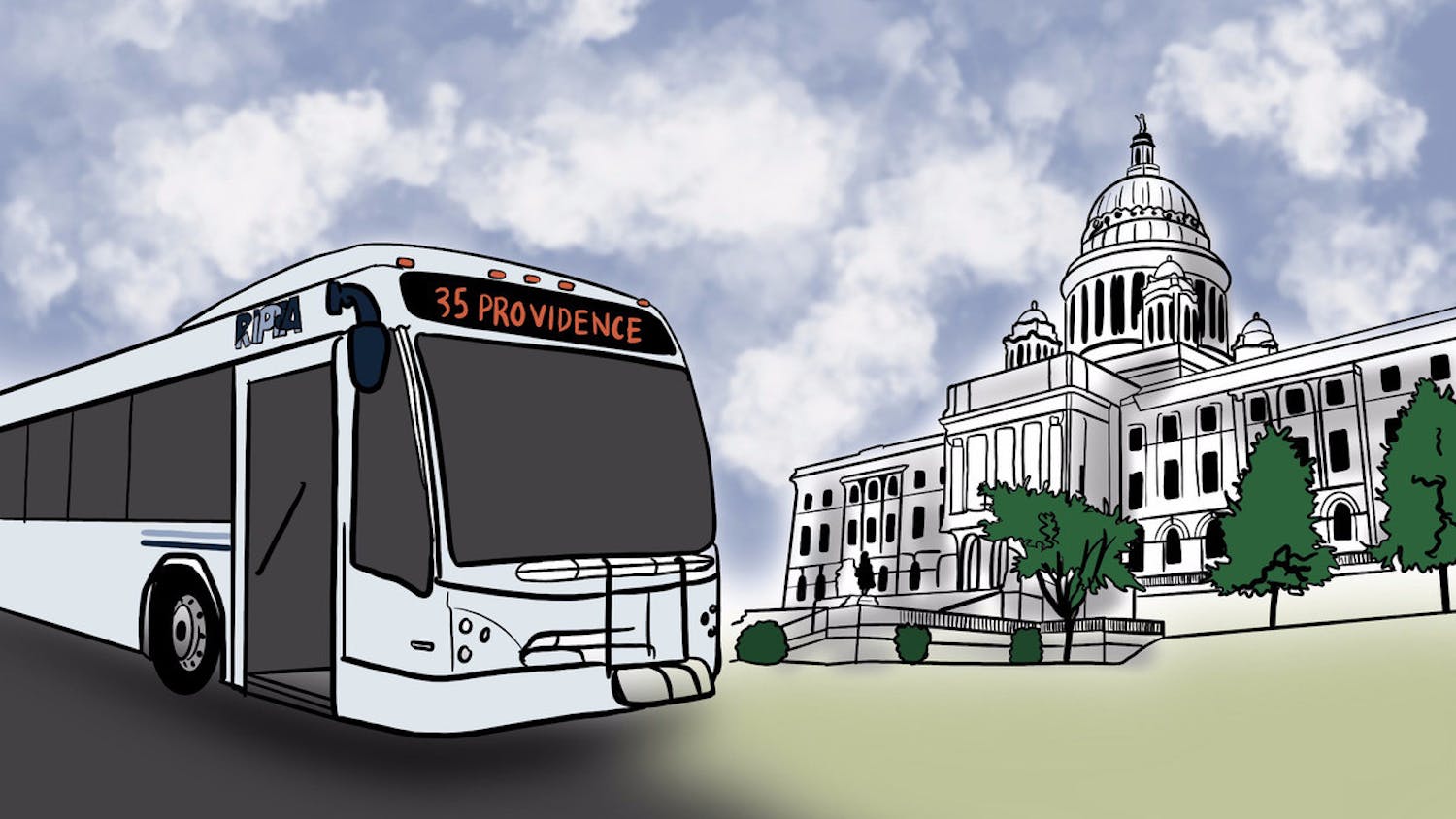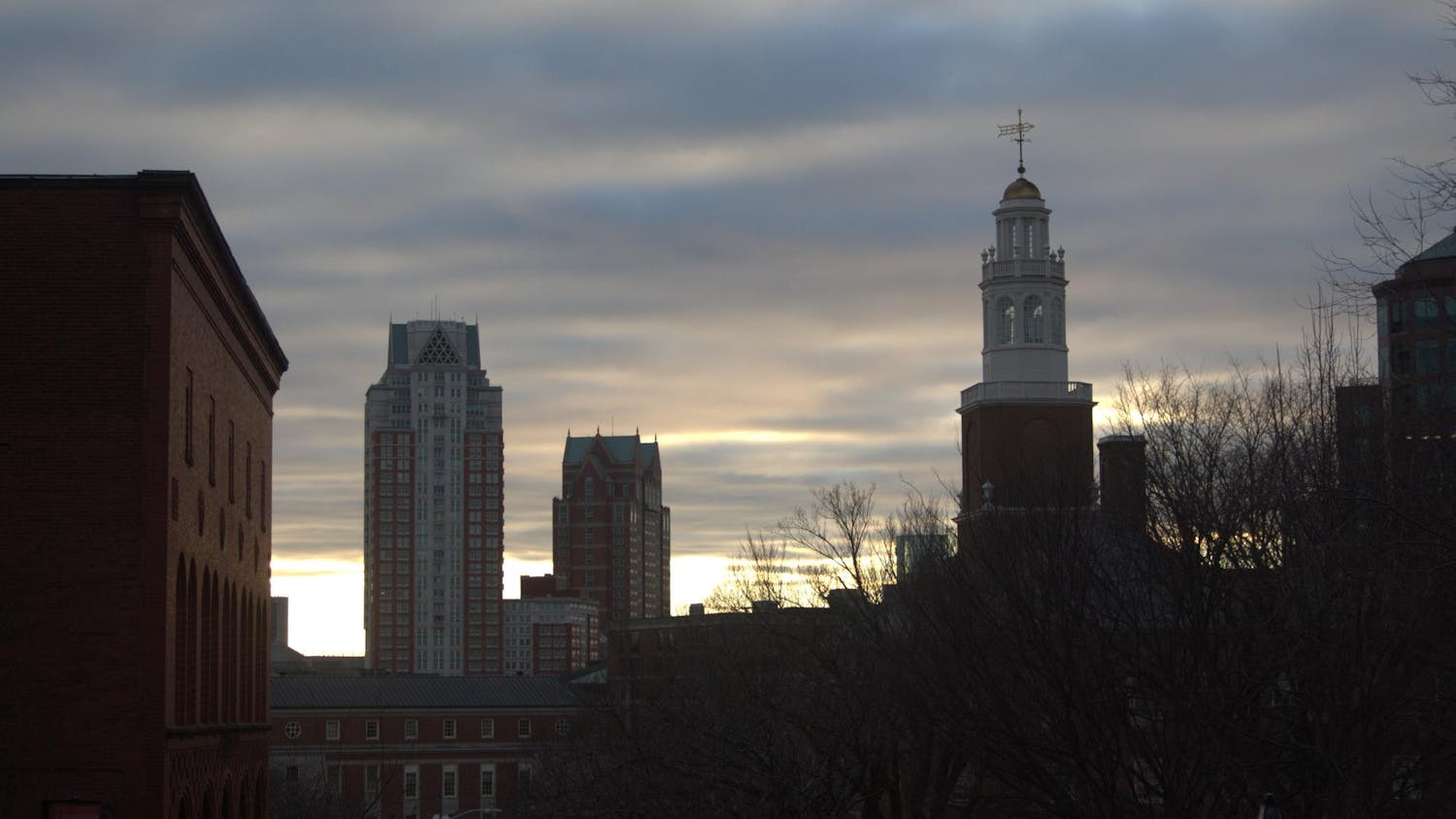On South Main Street, signs of life are everywhere: the honking of horns as cars whiz by, the wails of police sirens in the distance and the chatter of couples strolling along the Providence River. But when someone stops and glances at the newest addition to Memorial Park, the signs of the departed will also feel close.
Dedicated in late August, the Rhode Island Holocaust Memorial — spearheaded by Chair of the Rhode Island Holocaust Memorial Committee Herbert Stern — is the result of over 10 years of work.
Two dark granite posts greet visitors, one engraved with a short description of the history of the Holocaust, and the other engraved with the words of Holocaust survivor Roman Kent: “We do not want our past to be our children’s future.” A single Star of David is etched on the back of each post.
The memorial’s design allows guests to wander up the gently sloping path, following inlaid stone train tracks that slowly shrink as the walkway progresses. The idea of incorporating these tracks was that of one survivor whom memorial designer Jonathan Bonner spoke to about his plans, he said.
“It was a process of accommodation,” Bonner said, adding that “the survivors were very insistent on having an artifact of the Holocaust.” Bonner said the friendships he shared with his late neighbors, Lea Eliash and Oscar Garfunkel, survivors of the Holocaust from Lithuania and Latvia, respectively, influenced his decision to contribute to the project.
As visitors advance further along the pathway, they reach a large white stone that rests on the center of what resembles spokes on a wheel.
“The white stone is called the life stone and signifies continuance and the future,” Bonner said. Since the memorial’s dedication, visitors have placed stones on top of the life stone, an act none of the planners anticipated. “It shows that there is an interaction, and that the memorial is touching people. It means something,” Bonner said.
Six columns, representing the lives of the six million Jews who lost their lives in the Holocaust, encircle the stone. The columns differ in height, symbolizing the indiscriminate nature of the bloodshed during the Holocaust, Bonner said.
The memorial’s completion comes at an important time for present and future generations, said Marshall Einhorn, executive director of Brown/RISD Hillel. “We are losing people who can give firsthand testimony of what it meant to experience and survive the Holocaust. We need to ensure that the lessons of the Holocaust don’t get swept aside,” he said. Einhorn said he hopes visiting the memorial will encourage people to learn more about the evils that transpired and ultimately help prevent such devastating events from repeating themselves.
Alice Goldstein, a Holocaust survivor and Providence resident who served on the memorial planning committee, travels around the country to talk about the importance of speaking out and not being a bystander. As a young girl, Goldstein witnessed firsthand how the German government took over to create an “atmosphere of fear and hate,” she said.
“There are lessons to be learned that we tend to forget,” Goldstein said. “We hope (the visitors) recognize that it’s important to respect diversity. Not everyone has to be in the same mold. We have to respect each other and recognize that we are all human beings.”

ADVERTISEMENT




